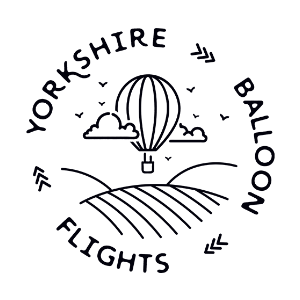Hot air Balloon Facts
Below are some fun facts and figures on Hot air balloons you may have useful. You are welcome to use these facts for publication but would appreciate a link to the website in return.
Hot air balloons were the first technology to allow Humans to fly.
While hot air goes into the Balloon it is not hot air that makes the Balloon go up. It is actually the Air becoming less dense than the air surrounding the Balloon as a result of the Heat.
Pilots in the UK are required to train for a minimum of 16hrs (Generally 16 flights), 4 of which need to be with a pilot classed as an Instructor. The final Instructor flight you may be told you are ready for a Flight test with an Examiner and if you pass you can do your first solo flight. You also need to complete 5 exams in Meteorology, Air Law, Navigation, Balloon Systems and Human Performance to CAA standard.
The fastest a manned balloon has travelled was in excess of 245mph (recorded) by Per Lindstrand and Richard Branson in an attempt to cross the Pacific Ocean in 1991.
The largest manned Hot air balloon was flown by Vijaypat Singhania an Indian explorer in an attempt to become the highest person to fly in a balloon in 2005 the volume of the Balloon was 1,600,000cu ft and reached an altitude of 69,850ft.
The first special shape Hot air Balloon to be built was the Robertson Golly in the UK in 1976 for marketing purposes.
Some of the strongest Hot air Balloon Materials known as Hyperlast/Ultralast/Hyperlife have the ability to repair themselves if a hole develops simply by rubbing the effected area a while.
The bottom of the Hot air balloon are typically made from a material called Nomex which is a fire resistant material. Also used to as the overalls for Formula 1 drivers.
There have only been successful attempts to circumnavigate the world by a Balloon. Bertrand Picard and Brain Jones in 1999, Steve Fossett in 2002 and Fedor Konyukhov in 2016.
Hot air Balloons generally use Liquid propane to power the burners however the Butane or a Butane/Propane mix can be used.
If the Weather is quite cold this can reduce the fuel pressure in the fuel cylinders to the Balloon. Nitrogen can be used to increase the pressure in the fuel cylinders.
It is a myth a Hot air Balloon can pop, Hot air Balloons have holes at the bottom and a sealed Hole at the top so they can not pop. Gas Balloons however can.
Albuquerque in New Mexico in the US hold the records for having the largest amount of balloon festival in the world with over 500 balloons in attendance each year.
The records for the most Hot air Balloons launched at the same was in Chambley, France where 433 launched within a 20 minute period.
To release air from a balloon the most common system is called a Parachute system where the pilot can control a line going to the top of the Balloon to pull a circler piece of fabric top downwards which releases air, Imagine an upside down plug.
The biggest passenger carrying balloon can carry 32 passengers and 2 pilots.
Modern Hot air ballooning was invented by Ed Yost in the USA in the 1950’s, His insight for using Nylon and Propane as a fuel source.
A standard Hot air balloon can climb or descend safely at 5metres a second or 1000ft per minute. Competition balloons however can climb or descend at 1800ft per minute.
Gas Balloons were used in both the US civil war and World War one as observation posts on the front lines giving their respective Armies up to date knowledge of the enemy locations and troop movements in the area.














































